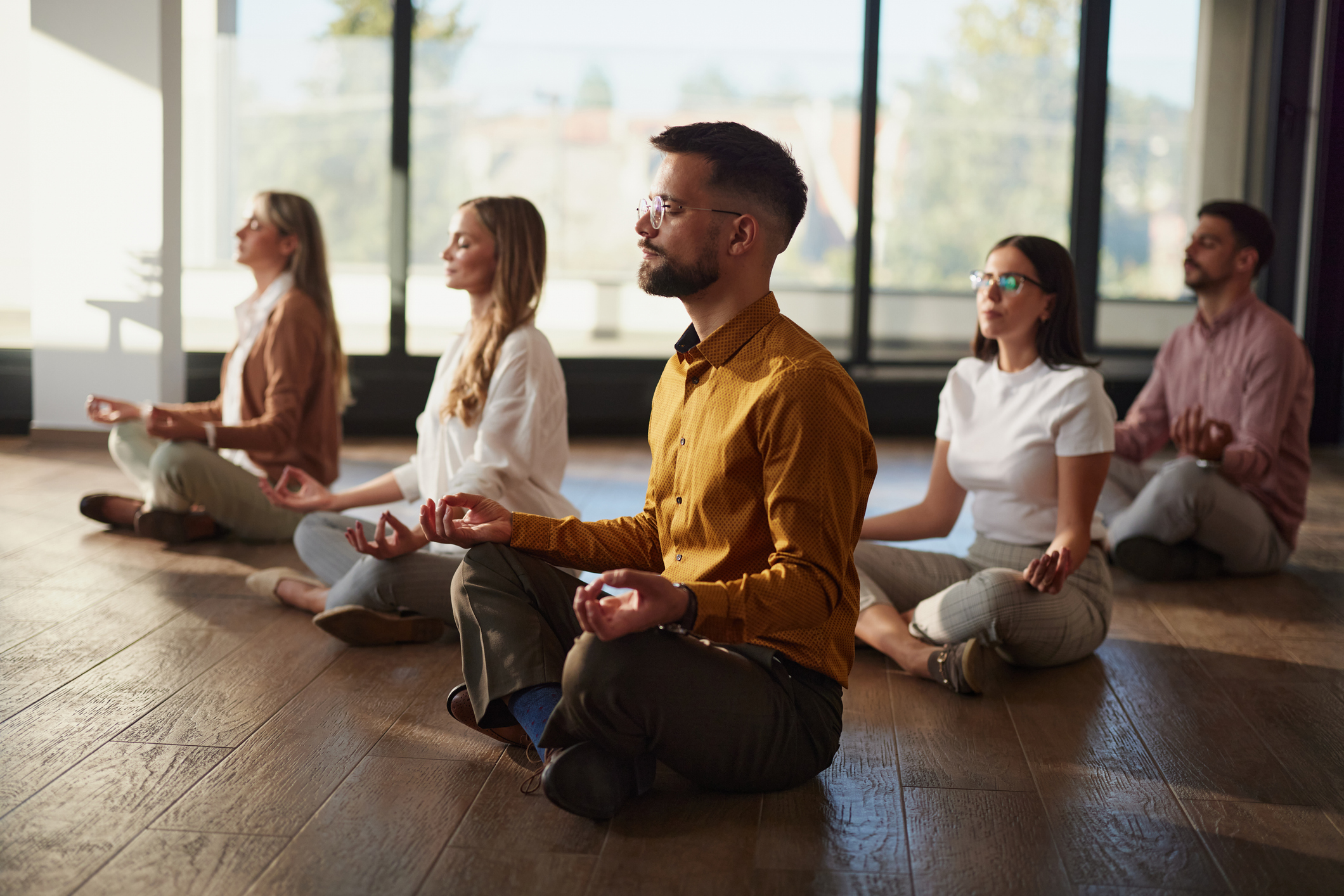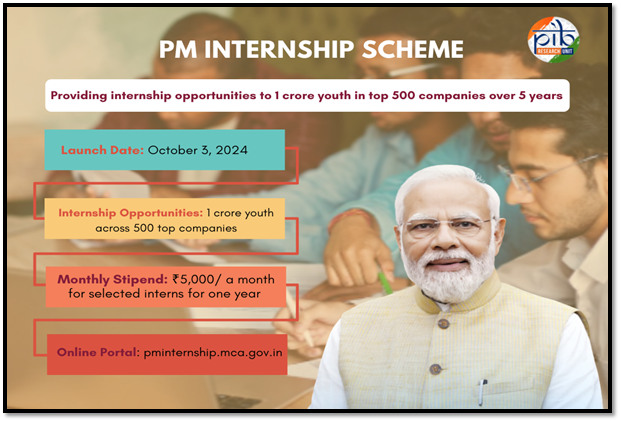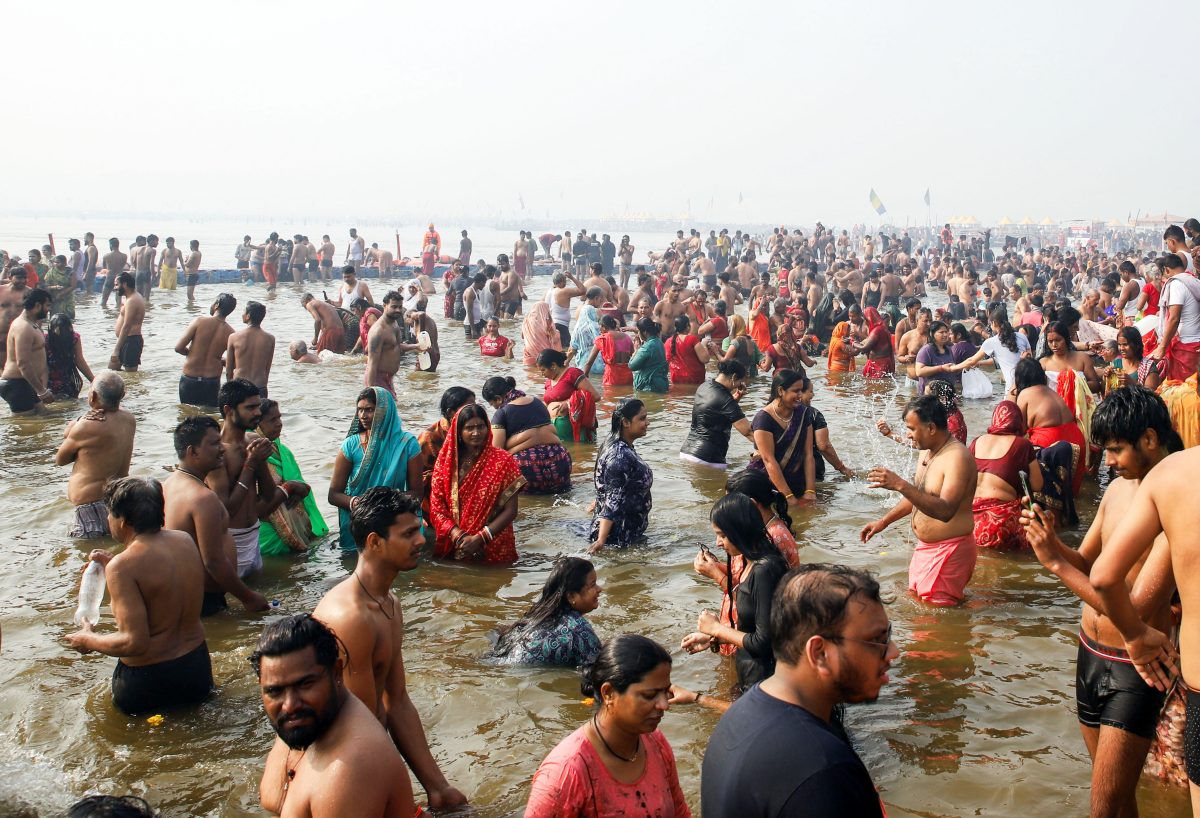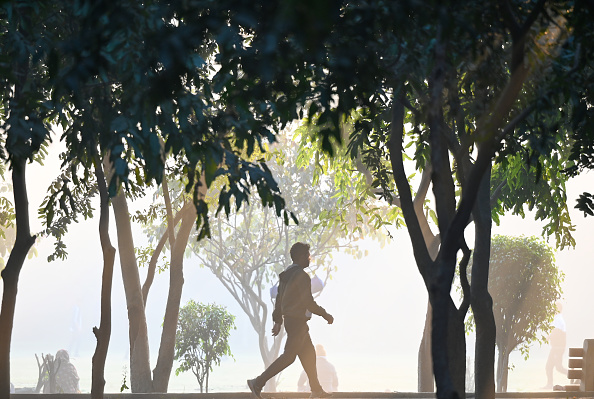In a world where artificial intelligence suggests what to think, algorithms dictate how to feel, and screens consume human attention, meditation emerges as an act of quiet defiance. No longer confined to monks in the Himalayas or sages on the banks of the Ganges, it has become an essential tool for modern existence.
Yet, as the world marks International Meditation Day, the essence of this ancient practice is at risk of being diluted. Meditation, once a path to deep self-awareness and spiritual liberation, is now increasingly repackaged as a quick-fix solution, offered through wellness apps, corporate stress-reduction programs, and productivity tools. While these adaptations bring meditation into mainstream consciousness, they often strip away its original depth, reducing it to yet another commodity in an era of relentless distractions.
International Meditation Day was not created as a symbolic initiative — it was born out of necessity. It has become a survival tool for the modern mind, a response to the growing crisis of mental fatigue, fractured societies, and the overstimulation of the digital age.
The day is marked by global gatherings, virtual sessions, and guided meditations that unite people across cultures. From mass meditation events in cities like New York, London, and Delhi to online mindfulness workshops hosted by global wellness communities, the day serves as a reminder of the collective power of stillness.
Organizations like the Art of Living and the Mindfulness Project host special programs, while schools and workplaces incorporate meditation sessions to highlight its benefits.
The question here is not whether meditation is relevant — but whether it can serve as a counterbalance to the unprecedented mental overload of contemporary life.
Even world leaders have begun to acknowledge meditation’s significance in tackling stress and improving focus. Prime Minister Narendra Modi, in his Pariksha Pe Charcha 2025 address, highlighted the practice as a powerful antidote to anxiety, particularly for students grappling with academic pressure.
“Meditation and breath control are extremely effective in calming the mind. When you are stressed, focus on identifying different sounds around you — it will instantly ground you in the present,” he advised. He also emphasized the power of Pranayama, adding, “Breathing exercises generate energy and stabilize the body in seconds.”
Modi’s message underscores a broader truth — meditation is not just a wellness practice; it is a tool for clarity, resilience, and self-mastery in an era of cognitive overload.
For centuries, meditation was an intimate and introspective pursuit, requiring patience, discipline, and effort. Today, ironically, it has been rebranded into five-minute guided sessions on mobile apps, squeezed in between meetings and social media scrolling.
This shift is not accidental. It reflects a larger, ongoing battle for human attention.
In the last decade, digital technology has completely reshaped human behaviour. The World Health Organization (WHO) has officially recognized stress as the epidemic of the 21st century — a reflection of the relentless pressures of modern life. Unlike physical illnesses that can be diagnosed and treated through conventional medicine, stress operates as a silent disruptor, affecting mental health, cognitive function, and even physical well-being. Chronic stress has been linked to a host of ailments, from cardiovascular disease to weakened immune responses, making it a global health crisis that transcends geographical and socioeconomic boundaries.
The toll of this crisis is perhaps most evident in the alarming rise in suicide rates worldwide. Mental health disorders, particularly anxiety and depression, have emerged as leading causes of disability, pushing individuals to the brink of emotional collapse. The increasing social isolation caused by digital engagement, economic anxieties, and the competitive pressures of modern society have exacerbated feelings of loneliness and despair. Many countries are grappling with the repercussions of a mental health crisis that remains underfunded and often overlooked, despite its devastating impact on families and communities.
Workplace stress has also reached unprecedented levels, with a 2023 global survey revealing that over 80% of workers experience stress on a daily basis. The blurring of work-life boundaries, particularly with the rise of remote work and the always-on digital culture, has created an environment where employees struggle to disconnect. The pressure to meet deadlines, the fear of job instability, and the expectation of constant availability have all contributed to rising burnout rates. This relentless cycle not only affects individual well-being but also leads to declining productivity, increased absenteeism, and a workplace culture that prioritizes output over mental health.
At the heart of this crisis is the explosive rise in digital dependency. Studies indicate that the average person now checks their phone 150 times a day — an unconscious habit that has rewired human attention spans and diminished the ability to focus for extended periods. Screen time has tripled over the past decade, fundamentally altering sleep cycles, cognitive processing, and even interpersonal relationships. What is particularly concerning is that these effects are no longer limited to adults. Children as young as eight years old are exhibiting signs of digital addiction. Excessive exposure to screens, particularly social media and online gaming, has been linked to increased anxiety, attention disorders, and emotional dysregulation in younger generations.
Meditation is often spoken about in the context of individual well-being. But what about its power to heal societies?
India’s contribution to global spirituality is undeniable — from Vedic seers to Gautama Buddha, from Patanjali’s Yoga Sutras to modern meditation masters. Yet, for decades, meditation was seen in the West as an exotic practice rather than a universal human tool.
That perception has changed dramatically. Much like the global acceptance of yoga, meditation has also transcended its origins. The success of International Yoga Day (June 21) paved the way for International Meditation Day, marking the shift from viewing meditation as an Eastern tradition to recognizing it as a universal human necessity.
The global recognition of meditation marks a shift from viewing it as an ancient Eastern practice to a universal necessity. But beyond acknowledgment, there lies the big question: can it actively counter the mental and emotional chaos of modern life? Every day, billions of people are caught in a maelstrom of distractions, their consciousness shaped by digital stimuli, economic anxieties, and ideological conflicts. The world’s largest tech companies have mastered the art of keeping users perpetually engaged, while meditation offers a way to step back, unplug, and regain control over one’s own mind.
Prime Minister Modi has repeatedly emphasized the transformative power of meditation for both personal and collective well-being. He urged, “I call upon everyone to make meditation a part of their daily lives and experience its transformative potential. Meditation is a powerful way to bring peace and harmony to one’s life, as well as to our society and planet.” His words resonate far beyond India.
Harvard research confirms as well that meditation strengthens the prefrontal cortex, counteracting the cognitive decline caused by excessive digital exposure.
Meditation is increasingly finding its place in diplomacy, governance, and international relations as leaders recognize the power of mindfulness in conflict resolution and decision-making. High-level figures, including UN officials and global policymakers, have begun incorporating meditation practices to enhance emotional intelligence, improve focus, and cultivate patience — qualities essential for diplomacy. Philosopher Jiddu Krishnamurti once remarked, “The ability to observe without evaluating is the highest form of intelligence.”
As the world grapples with rising geopolitical tensions, meditation is emerging not just as a personal wellness tool but as a silent force shaping diplomatic engagements, promoting mindfulness-based leadership, and even de-escalating conflicts through inner stillness.
Some of the greatest figures in history — Mahatma Gandhi, Swami Vivekananda, and the Dalai Lama — all viewed inner peace as a prerequisite for societal harmony.
Today, modern meditation movements are using these same principles to mediate conflicts. Sri Sri Ravi Shankar’s Art of Living Foundation, for example, has facilitated peace-building efforts in war zones such as Colombia and Iraq. His words reflect the power of meditation in fostering global healing. He says, “Meditation is the journey from sound to silence, from movement to stillness, from a limited identity to unlimited space.”
India can protect its spiritual landscapes from the relentless march of urbanization by implementing:
-
Meditation Conservation Zones: Establishing legally protected meditation zones, similar to wildlife sanctuaries, could safeguard sacred forests, riverbanks, and mountain retreats from unchecked commercial exploitation.
-
Eco-Spiritual Tourism: Encouraging responsible tourism models can generate revenue for conservation without disrupting the ecological balance of meditation retreats. Destinations like Rishikesh, Dharamsala, and the sacred groves of Kerala must be protected not just as tourist spots but as centres of spiritual heritage.
-
Local Guardianship: Empowering local communities to act as stewards of meditation sites ensures preservation efforts remain culturally sensitive and sustainable. Traditional caretakers, including monks and indigenous groups, have long protected these spaces. Formalizing their role can strengthen conservation efforts.
Sacred geography is not just about aesthetics — it is about energetic and spiritual preservation. The destruction of India’s meditation landscapes is not just an environmental loss; it is a loss of humanity’s connection to stillness itself.
Vasudhaiva Kutumbakam: The world is one family — Ancient Indian philosophy never viewed meditation as an isolated practice. The idea of Vasudhaiva Kutumbakam suggests that when individuals meditate, they uplift the collective consciousness of society.
Meditation in Historical Leadership — Indian warriors and kings practiced meditation before battle, not to suppress fear, but to cultivate clarity. Emperor Ashoka’s transformation after the Kalinga war is a testament to the power of meditation in reshaping leadership and governance.
While meditation has been embraced by the corporate world, it must be more than just a tool for stress relief. Its true purpose extends into leadership, governance, and conflict resolution. It has become a new language of diplomacy — an integration where wisdom, patience, and emotional intelligence are needed most. It must be recognized as a global movement, one that calls for a deeper shift in human consciousness.
The roots of meditation have always been intertwined with nature, yet modern life has severed this connection. The philosophy of ancient Indian traditions — from the Pancha Mahabhutas (Five Great Elements) to Buddhist mindfulness — emphasizes that human well-being is inseparable from the well-being of the planet. International Meditation Day should serve as a reminder that stillness is not passive; it is a radical, transformative act that can shift the way individuals, leaders, and societies operate in an overstimulated world.
This International Meditation Day, let us meditate in silence, let us meditate with purpose. The future of our minds, our relationships, and our planet depends on our ability to reclaim stillness — and to truly live the reality of Vasudhaiva Kutumbakam.
(Bhakti Parikh is a dynamic professional with expertise in journalism, public relations, and media management)





















